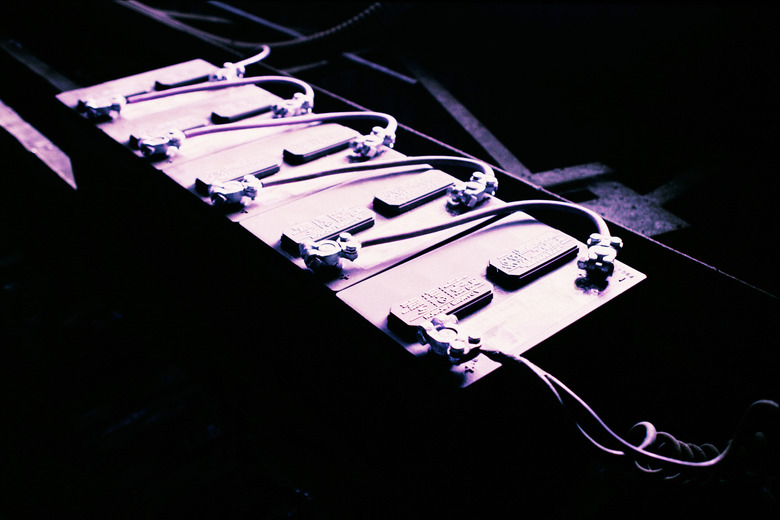DIY Dual Battery Wiring
A single battery is capable of providing direct current (DC) electrical power to a wide array of electrical devices. However, there are times where one battery cannot satisfy the needs of an electrical circuit. Several batteries may be wired together in a circuit to provide adequate electrical power to the circuit. A battery bank is wired according to whether an electrical circuit needs more current or more voltage.
Dual Batteries in Series
Wiring two batteries in series involves connecting the negative terminal of the first battery to the positive terminal of the second battery. This allows the voltage differentials of both batteries to be added to each other. For example, if two 12 Volt batteries are wired in series as formerly described, the difference in voltage between the positive terminal on the first battery and the negative terminal on the second battery is 24 Volts.
The two batteries need not be the same voltage to be connected in a series circuit. A 6 Volt battery connected in series with a 12 Volt battery will provide a voltage difference of 18 Volts from the positive terminal on the first battery to the negative terminal on the second battery.
To more easily take advantage of a battery bank created by wiring two batteries in series, wire one ring terminal to the positive battery terminal on the first battery, and wire a second ring terminal to the negative terminal on the second battery. This will allow quick connections and disconnections to be made from the battery, which allows the battery bank to be used as a portable power source.
Dual Batteries in Parallel
Two batteries of equal voltage wired in parallel allow the electrical load to be shared between both batteries. If, for example, the two batteries are rated at 12 V / 2 Amperes, the battery bank would be capable of handling an electrical load of 12 V / 4 Amperes.
To wire two batteries in parallel, connect the two positive terminals to each other using a battery cable or electrical wire attached to the battery posts. Connect the two negative terminals to each other in the same fashion. To tap into the battery bank, a connection may be made at either positive terminal and either negative terminal, since each set of terminals is electrically connected.
Do not, however, connect each positive terminal to the opposite battery's negative terminal. Doing so will short circuit the batteries, and poses a fire hazard.
References
Cite This Article
MLA
Sandoval, David. "DIY Dual Battery Wiring" sciencing.com, https://www.sciencing.com/diy-dual-battery-wiring-5844046/. 24 April 2017.
APA
Sandoval, David. (2017, April 24). DIY Dual Battery Wiring. sciencing.com. Retrieved from https://www.sciencing.com/diy-dual-battery-wiring-5844046/
Chicago
Sandoval, David. DIY Dual Battery Wiring last modified March 24, 2022. https://www.sciencing.com/diy-dual-battery-wiring-5844046/
